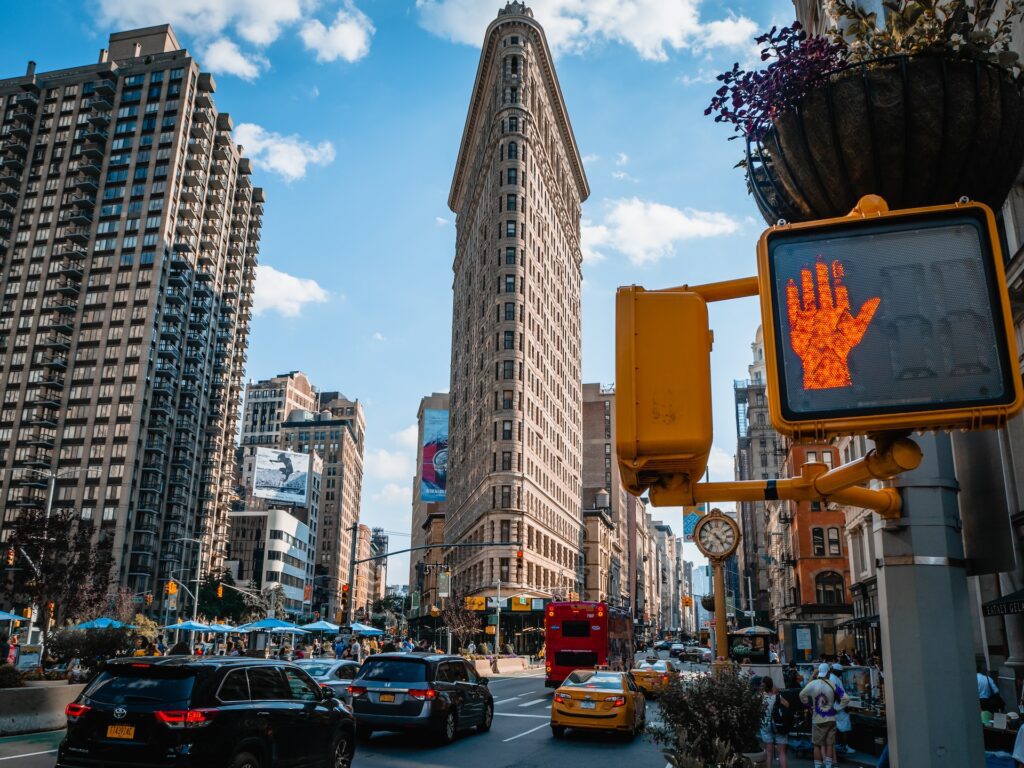Flatiron Building In New York City
When we think of New York we think of its huge skyscrapers characterized by their impressive heights and their almost impossible architecture. These powerful skyscrapers together with its great avenues make it a paradise for the eyes. Wherever you look it is possible to find buildings of different sizes and appearances that are linked with beautiful parks and thousands of cultures.
If a ranking of the most emblematic buildings in the Big Apple could be established, we could surely name: The Empire State, The Top of the Rock, the Chrystler and of course the iconic Flatiron Building.
The Flatiron Building, officially known as the Fuller Building and also called the Flat Iron, is one of the first skyscrapers in New York City, located in the borough of Manhattan. At present and accompanied by so many other buildings in the area, its height does not seem unusual, but when this building was built in 1902, it had a great visual impact on the city thanks to its 87-meter height. and 22 plants.
The story goes that in 1856 a banker and real estate agent named Amos Eno moved to 26 West 23rd Street. At that time, the Franconi racetrack existed at that same point, to which, shortly after moving, he decided to demolish it and build the legendary Fifth Avenue Hotel in its place.
5th Avenue and Broadway intersected at 23rd Street creating a triangular plot of land, so Amos Eno decided to buy the land to become the home of the future Flatiron Building in New York, although along Over the years it was called “Eno’s triangle” “Eno’s corner” and many other names.
In 1901 the Fuller Construction Company (who have also built the Plaza Hotel, Macy’s New York and the original Pennsylvania Station) bought the entire triangle-shaped parcel from Samuel and Mott Newhouse (Amos Eno’s nephews).
The triangle was ready to accommodate a building that was to become a reference point both for its design and its location.
Completed in 1902, the building was twice the height of its neighbors, making it the tallest building in the city that could be seen from beyond Central Park and the Statue of Liberty.
At first its name was going to be Fuller Building, but it’s obvious resemblance to the shape of a plate made it Flatiron which remains to this day.
Designed by the architect and urban planner Daniel Burnham, the skyscraper was made in this way to cover the sector between the intersection of Broadway and Fifth Avenue, where it currently stands. The structure forms an angle of 25 degrees, where its points measure only 2 meters in length.
Some peculiarities of this peculiar architectural work are:
– Despite the large amount of criticism received after its construction, where the media such as the Times called it “an eyesore”, the Tribune compared it to a poor slice of pie or the Architectural Record, who considered it as something very strange and uncomfortable, among others, the building became one of the icons of the city and one of the most loved worldwide
– In the Flatiron Building there was a restaurant which was located together with the observatory located on the top floor where you could enjoy panoramic views of the city. In 1911 a new restaurant opened in the basement of the building, which was one of the first venues to allow a black jazz band to perform. It was from that moment that the building began to become a meeting place for gay men and prostitutes. Later in 1911 the restaurant was bought by Louis Bustanoby and named Taverne Louis, a very trendy Beaux-Arts style restaurant with a capacity for 400 people and one of the first to allow gay clients, something quite unusual for a restaurant of this type at that time.
– Due to its triangular shape, the building divides two main avenues of the city and creating a stronger wind current, which is why many men stood on the corner of 23rd Street to wait for one of those winds to lift the skirts of the women who They were walking around the area. The situation had to be controlled by the police who were working to evict these onlookers from the corner. This is how the expression “23 Skidoo” was born, which means “Get lost”.
The building has also been the setting for many movies and TV shows. The best known appearance is in the 2002 film Spider-Man, where the main character is shown fighting on top of the building. Additionally, the building has been used as a filming location for the television series Mad Men and the film Men in Black 3.
We have the unbeatable price of $500 per day for your Billboard:
Option 1: Your 60 second video/photo will be shown, 60 seconds per hour 22 times a day.
Option 2: Your 30 second video/photo will be shown, twice an hour, 44 times a day.
Option 3: Your 15 second video/photo will be shown 4 times per hour 88 times per day.
Please let us know which option you would like to choose. Remember that we have a response time of 72 hours.

